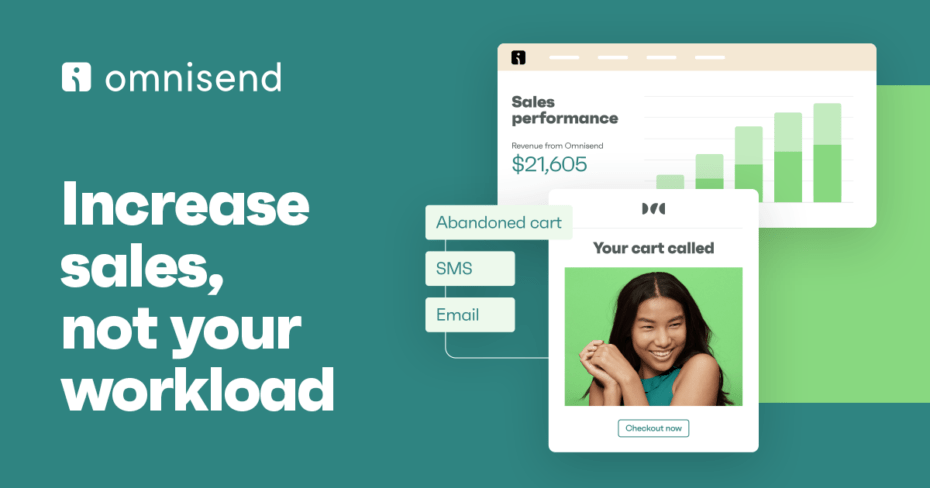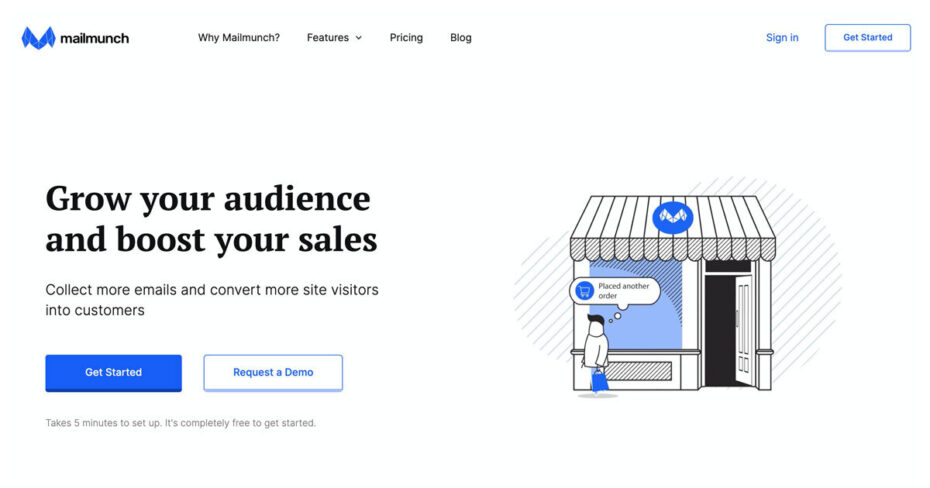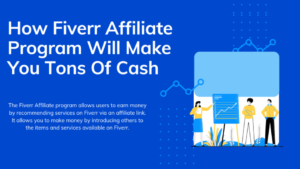What’s passive income? Passive income is the revenue you earn with minimal effort and ongoing involvement. It allows you to generate additional cash flow, providing financial stability and freedom.
In this guide, we’ll explore various strategies to create passive income, focusing on affiliate marketing, email marketing, blogging, and online courses.
Understanding What’s Passive Income
Passive income is a crucial concept for anyone looking to diversify their income streams and achieve financial freedom. Unlike active income, which requires continuous effort and time, passive income allows you to earn money with minimal ongoing involvement. This section will delve into what passive income is, its importance, and the various benefits it offers.
Generating passive income can provide a stable financial foundation, allowing you to focus on other interests or invest time in creating additional revenue streams. Understanding what’s passive income and how it works is the first step towards financial independence and a more secure future.
Definition and Importance of Passive Income
Passive income is the money earned with little to no daily effort. Common sources include rental properties, dividends from investments, and royalties from creative works. Essentially, it’s income that doesn’t require your active participation once the initial setup is complete. This type of income is vital because it provides financial stability and the freedom to pursue other ventures without being tied to a traditional job.
One key advantage of passive income is its potential to grow over time. As you build more streams of passive income, you can reinvest earnings to further increase your revenue. This compounding effect can significantly enhance your financial health and open up opportunities for early retirement or funding your dreams.
Building passive income streams often requires upfront effort and investment. However, the long-term benefits far outweigh these initial costs. By diversifying your income sources, you create a safety net that can protect you against economic downturns and job loss, ensuring a more resilient financial future.
Another important aspect of passive income is its role in achieving financial freedom. When your passive income exceeds your living expenses, you attain a level of financial independence that allows you to make choices based on your desires rather than financial necessity. This freedom is a powerful motivator for many individuals pursuing passive income strategies.
Active Income vs. Passive Income
Active income involves trading time for money. Examples include salaries, hourly wages, and freelance work. This type of income requires your continuous effort to earn. If you stop working, the income stops too. Active income is straightforward and typically more immediate, but it lacks the scalability of passive income.
In contrast, passive income continues to flow even when you’re not actively working. After the initial setup, such as investing in stocks or creating an online course, the income stream requires minimal maintenance. This distinction makes passive income an attractive option for those looking to build wealth without being tied to a 9-to-5 job.
The main difference between active and passive income lies in effort and sustainability. Active income is limited by the hours you can work, while passive income can grow exponentially without additional time investment. This scalability makes passive income a key component of a robust financial strategy.
Balancing both active and passive income streams is often the best approach. While active income can provide immediate cash flow, passive income builds long-term wealth and financial security. Combining both allows you to meet short-term needs while planning for a financially stable future.
Benefits of Generating Passive Income
Generating passive income offers numerous benefits, including financial stability, flexibility, and growth potential. One of the most significant advantages is the ability to earn money without continuous effort, freeing up time for other pursuits.
Passive income provides financial security by diversifying your income sources. This diversification means that you are less reliant on a single source of income, reducing the risk associated with job loss or economic downturns. A well-diversified passive income portfolio can act as a financial cushion in uncertain times.
Additionally, passive income streams can be scaled. For example, once you create an online course, you can sell it to an unlimited number of students without extra work. This scalability means that your earning potential isn’t capped by the number of hours you can work, allowing for significant financial growth over time.
Lastly, passive income contributes to financial freedom. When your passive income covers your living expenses, you gain the freedom to choose how you spend your time. This autonomy can lead to a more fulfilling life, allowing you to pursue passions, travel, or spend more time with loved ones without financial stress.
Affiliate Marketing for Passive Income
Affiliate marketing is a powerful way to generate passive income. By promoting products or services from other companies and earning a commission for each sale made through your referral, you can create a steady stream of revenue with minimal ongoing effort. Understanding what’s passive income and leveraging affiliate marketing can significantly boost your financial growth.
Choosing the right affiliate programs and implementing effective strategies are key to success in affiliate marketing. With the right approach, you can build a loyal audience and create a sustainable passive income stream that supports your financial goals.
Choosing the Right Affiliate Programs
Selecting the right affiliate programs is crucial for your success. Look for programs that offer products or services relevant to your niche and audience. High-quality products that you genuinely believe in are easier to promote and can lead to higher conversion rates.
When evaluating affiliate programs, consider the commission structure and payment terms. Programs that offer recurring commissions for subscription-based products or services can be particularly lucrative, providing ongoing income for the lifetime of the customer. Additionally, look for programs with reliable tracking and reporting systems to ensure you get credited for every sale.
Another important factor is the reputation of the affiliate program and the company behind it. Partnering with reputable companies enhances your credibility and trustworthiness, which can positively impact your audience’s willingness to purchase through your links. Research the company’s history, read reviews, and possibly test the products yourself to ensure quality.
Finally, consider the level of support and resources the affiliate program provides. Comprehensive training materials, marketing tools, and dedicated affiliate managers can significantly enhance your ability to promote products effectively and maximize your earnings.
Building an Audience for Affiliate Success
Building a loyal and engaged audience is essential for affiliate marketing success. Start by identifying your target audience and understanding their needs, preferences, and pain points. Creating valuable content that addresses these aspects will attract and retain your audience.
Leverage various platforms to grow your audience, including social media, blogs, email newsletters, and YouTube. Each platform has unique advantages, and using a multi-channel approach can help you reach a broader audience. Consistency is key, so regularly posting high-quality content will keep your audience engaged and coming back for more.
Engage with your audience by responding to comments, asking for feedback, and creating interactive content such as polls or Q&A sessions. Building a community around your brand fosters trust and loyalty, making your audience more likely to click on your affiliate links and make purchases.
Another effective strategy is to collaborate with other influencers or creators in your niche. Partnerships can help you reach new audiences and build credibility through association. Guest posts, joint webinars, and social media shoutouts are great ways to collaborate and expand your reach.
Effective Strategies for Promoting Affiliate Links
To maximize your affiliate income, employ effective strategies for promoting your links. One of the most powerful methods is creating in-depth, high-quality content that naturally incorporates your affiliate links. Product reviews, comparison articles, and how-to guides are excellent formats that provide value to your audience while promoting your affiliate products
SEO optimization is crucial for driving organic traffic to your content. Conduct keyword research to identify relevant terms your audience is searching for, and incorporate these keywords naturally throughout your content. Optimizing your headlines, meta descriptions, and images can also improve your content’s visibility on search engines.
Utilize email marketing to promote your affiliate products. Building an email list allows you to directly communicate with your audience and recommend products you believe in. Create compelling email campaigns with personalized recommendations, exclusive discounts, or limited-time offers to encourage purchases through your affiliate links.
Social media is another powerful tool for affiliate marketing. Share your content and affiliate links on platforms like Instagram, Twitter, and Facebook. Use engaging visuals, compelling captions, and relevant hashtags to increase visibility and drive traffic. Hosting live sessions or stories where you discuss and demonstrate the products can also boost engagement and conversions.
Email Marketing as a Passive Income Stream
Email marketing is an effective way to generate passive income by leveraging your audience’s interest and engagement. By building a strong email list and delivering valuable content, you can create a steady revenue stream with minimal ongoing effort. Understanding what’s passive income and how email marketing fits into this concept is crucial for long-term financial success.
With the right strategies, email marketing can become a powerful tool in your passive income arsenal. From nurturing leads to promoting affiliate products, a well-crafted email marketing campaign can significantly boost your earnings and enhance your relationship with your audience.
Email Marketing Recommendations
 Aweber
|  Omnisend
|  Mailmunch
|
Building an Engaged Email List
Building an engaged email list is the foundation of successful email marketing. Start by offering valuable incentives to encourage sign-ups, such as free eBooks, exclusive content, or discounts. Ensure your sign-up forms are easily accessible on your website and social media platforms to capture as many leads as possible.
Segment your email list based on subscribers’ interests, behaviors, and demographics. This allows you to tailor your content to specific groups, increasing the relevance and engagement of your emails. Personalized content resonates more with your audience, leading to higher open and click-through rates.
Regularly clean your email list to remove inactive subscribers. Keeping your list updated ensures better deliverability and engagement rates. Use tools that identify and eliminate inactive or invalid email addresses, maintaining a healthy and active subscriber base.
Engage with your audience through consistent communication. Send regular updates, newsletters, and valuable content to keep your subscribers interested and engaged. Encourage feedback and interaction by asking questions, conducting polls, or including interactive elements in your emails.
Creating Compelling Email Content
Creating compelling email content is essential for maintaining subscriber interest and driving conversions. Start with attention-grabbing subject lines that entice recipients to open your emails. Use power words and a sense of urgency to make your subject lines stand out in crowded inboxes.
Personalize your emails by addressing subscribers by their names and tailoring content to their preferences and behaviors. Personalized emails feel more relevant and can significantly increase engagement and conversion rates. Use data and insights from your email platform to customize your messages effectively.
Incorporate high-quality visuals and engaging media into your emails. Images, videos, and infographics can make your emails more appealing and easier to digest. Ensure your visual content aligns with your brand and message, enhancing the overall user experience.
Include clear and compelling calls-to-action (CTAs) in your emails. Guide your subscribers towards the desired action, whether it’s making a purchase, signing up for a webinar, or downloading a resource. Use strong, action-oriented language and make your CTAs stand out visually to increase click-through rates.
Monetizing Your Email Marketing Efforts
Monetizing your email marketing efforts involves various strategies to generate income from your email list. One effective method is promoting affiliate products. Include affiliate links in your emails, recommending products or services that align with your audience’s interests and needs. Ensure your promotions feel natural and provide genuine value to maintain trust and credibility.
Offer exclusive deals and discounts to your email subscribers. Partner with brands to provide special offers that are only available to your email list. This not only incentivizes sign-ups but also drives conversions and sales through your email campaigns.
Sell your products or services directly through your email list. Use your emails to highlight new products, share success stories, and provide detailed information that encourages subscribers to make a purchase. Incorporate testimonials and reviews to build trust and credibility.
Utilize email automation to streamline your monetization efforts. Set up automated email sequences that nurture leads, welcome new subscribers, or follow up on abandoned carts. Automated emails ensure timely and relevant communication, enhancing the effectiveness of your email marketing strategy without requiring constant manual effort.
Blogging: Turn Your Passion into Passive Income
Blogging is an excellent way to transform your passion into a reliable source of passive income. By creating valuable content and strategically monetizing your blog, you can earn money while sharing your interests with the world. Understanding what’s passive income and how blogging fits into this concept can help you build a sustainable income stream.
Starting a blog requires choosing the right niche, creating SEO-optimized content, and employing effective monetization strategies. With dedication and the right approach, blogging can become a lucrative venture that provides long-term financial rewards.
Selecting Profitable Blog Niches
Choosing a profitable niche is the first step to successful blogging. Look for niches that you are passionate about but also have a substantial audience and demand. Popular niches include health and wellness, personal finance, travel, and technology. Conduct market research to identify gaps and opportunities within these areas.
Evaluate the competition in your chosen niche. High competition indicates a profitable market, but it also means you’ll need to differentiate yourself. Find a unique angle or perspective that sets your blog apart. This can be your personal experience, specialized knowledge, or a distinct writing style.
Consider the monetization potential of your niche. Some niches, like finance or technology, offer higher earning potential through affiliate marketing, sponsored posts, and digital products. Ensure there are enough monetization opportunities to justify the time and effort you’ll invest in your blog.
Stay updated with trends in your niche. The blogging landscape is dynamic, with new topics and trends emerging regularly. Keeping abreast of these changes allows you to produce relevant content that attracts and retains readers, ultimately boosting your blog’s profitability.
Writing SEO-Optimized Blog Posts
Creating SEO-optimized blog posts is essential for driving organic traffic to your site. Start by conducting keyword research to identify terms your target audience is searching for. Use tools like SEOPowersuite or Semrush to find high-volume, low-competition keywords relevant to your niche.
Integrate keywords naturally into your content, including in the title, headers, and throughout the body. Avoid keyword stuffing, as it can harm readability and search engine rankings. Focus on providing valuable, well-written content that answers your audience’s questions and needs.
Use engaging headlines and meta descriptions to entice readers to click on your posts. Include power words and a clear value proposition in your titles and descriptions to make them stand out in search results. Optimizing these elements can significantly improve your click-through rates.
Incorporate internal and external links to enhance your blog’s SEO. Internal links help search engines understand the structure of your site and improve user navigation, while external links to reputable sources add credibility and value to your content. Regularly update your posts with fresh information to keep them relevant and improve their search engine rankings.
Monetizing Your Blog with Various Strategies
There are several strategies to monetize your blog effectively. Affiliate marketing is a popular method, where you promote products or services and earn a commission for each sale made through your referral links. Choose high-quality, relevant products that provide value to your audience.
Sponsored posts and collaborations with brands can also generate income. Partner with companies that align with your niche and audience, creating content that showcases their products or services. Ensure these partnerships are transparent and maintain the trust of your readers.
Selling digital products, such as eBooks, courses, or printables, can provide a significant income stream. These products leverage your expertise and offer additional value to your audience. Create high-quality, useful products that solve problems or fulfill needs within your niche.
Display advertising through networks like Adsterra can generate passive income based on the traffic your blog receives. While this method requires substantial traffic to be profitable, it provides a steady revenue stream with minimal ongoing effort. Combine multiple monetization strategies to maximize your blog’s earning potential.
Online Courses: Share Knowledge and Earn Passively
Creating and selling online courses is a powerful way to share your knowledge and earn passive income. With the increasing demand for online education, there’s a vast opportunity to monetize your expertise. Understanding what’s passive income and leveraging online courses can significantly boost your financial growth.
By identifying profitable course topics, producing high-quality content, and marketing effectively, you can build a sustainable income stream that benefits both you and your students.
Identifying Profitable Course Topics
Choosing the right topic is crucial for the success of your online course. Focus on areas where you have expertise and passion, but also ensure there is demand. Conduct market research to identify gaps in the existing course offerings and the needs of your target audience.
Analyze popular courses on platforms like Udemy or Coursera to understand what topics are trending and what learners are looking for. Look for topics that have high enrollment but are not overly saturated, indicating a healthy demand with room for competition.
Consider the practical value of your course. Topics that offer tangible benefits, such as career advancement, skill development, or personal growth, tend to attract more students. Ensure your course content can solve a problem or fulfill a need for your audience.
Stay updated with industry trends and advancements in your field. This will help you keep your course content relevant and appealing to prospective students. Regularly update your course to reflect the latest knowledge and best practices.
Creating High-Quality Course Content
High-quality content is essential for the success of your online course. Start by outlining your course structure, breaking it down into manageable modules and lessons. Ensure each module builds on the previous one, providing a clear learning path for your students.
Use a variety of formats to keep your content engaging. Incorporate videos, slides, quizzes, and interactive elements to cater to different learning styles. High-quality visuals and clear, concise explanations can significantly enhance the learning experience.
Invest in good recording equipment and editing software to produce professional-looking videos. Clear audio and visual quality are crucial for maintaining student engagement and satisfaction. Practice your delivery to ensure you communicate clearly and confidently.
Provide supplementary materials, such as downloadable resources, assignments, and additional readings. These materials add value to your course and help reinforce learning. Regularly seek feedback from your students to identify areas for improvement and keep your content up-to-date.
Marketing and Selling Your Online Courses
Effective marketing is essential to attract students to your online course. Start by building a strong online presence through a professional website and active social media profiles. Use these platforms to share valuable content, engage with your audience, and promote your course.
Leverage email marketing to reach potential students. Build an email list by offering free resources or previews of your course. Create compelling email campaigns that highlight the benefits of your course and include clear calls-to-action to encourage enrollments.
Collaborate with influencers or industry experts to expand your reach. Guest blogging, podcast interviews, and joint webinars can help you tap into new audiences and build credibility. These collaborations can also provide valuable backlinks to improve your website’s SEO.
Offer limited-time discounts or bonuses to create urgency and encourage enrollments. Providing a money-back guarantee can also reduce the perceived risk for potential students, making them more likely to purchase your course. Use student testimonials and success stories to build trust and demonstrate the value of your course.
Tips for Maximizing Passive Income Streams
Maximizing passive income streams requires strategic planning and continuous effort. By diversifying your sources of passive income and regularly updating your content, you can ensure a steady flow of revenue. Understanding what’s passive income and implementing effective strategies can help you achieve financial independence.
Optimizing your passive income streams involves tracking and analyzing performance. This allows you to make data-driven decisions and improve your income-generating activities. With the right approach, you can maximize your earnings and secure a stable financial future.
Diversifying Your Passive Income Sources
Diversifying your passive income sources is crucial for financial stability. Relying on a single income stream can be risky, as market changes or personal circumstances may affect its profitability. By having multiple sources, you spread the risk and ensure a more reliable income.
Start by exploring different passive income opportunities, such as affiliate marketing, rental properties, dividends from investments, and digital products. Each source has its own advantages and can complement your overall income strategy. Diversification allows you to leverage various markets and capitalize on different revenue streams.
Investing in real estate can provide a steady passive income through rental payments. Properties in high-demand areas or vacation rentals can generate significant returns. Consider both residential and commercial properties to diversify within the real estate sector.
Another effective strategy is to invest in stocks that pay dividends. Dividend-paying stocks provide regular income without the need to sell your shares. Reinvesting dividends can further compound your earnings, increasing your passive income over time.
Consistently Updating and Improving Content
Consistently updating and improving your content is essential for maintaining and growing your passive income. Fresh, relevant content attracts and retains your audience, ensuring ongoing engagement and revenue. Regular updates also improve your search engine rankings, driving more organic traffic to your site.
Start by conducting a content audit to identify outdated or underperforming content. Update these pieces with new information, improved visuals, and optimized keywords. This not only enhances the user experience but also signals to search engines that your content is current and valuable.
Creating new content based on emerging trends and audience interests is equally important. Stay informed about industry developments and incorporate them into your content strategy. Providing timely and relevant information keeps your audience engaged and positions you as a thought leader in your niche.
Encourage user interaction and feedback on your content. Comments, reviews, and social media shares can provide valuable insights into what your audience values. Use this feedback to refine your content and better meet the needs of your audience, ultimately boosting your passive income.
Tracking and Analyzing Performance
Tracking and analyzing the performance of your passive income streams is crucial for optimizing your strategy. Use analytics tools to monitor key metrics such as traffic, conversion rates, and revenue. Understanding what’s passive income and how it performs helps you make informed decisions and improve your income-generating activities.
Start by setting clear goals and KPIs for each income stream. Regularly review these metrics to identify trends and areas for improvement. For example, if a particular affiliate product isn’t converting well, consider promoting a different product or adjusting your marketing approach.
Conduct A/B testing to compare different strategies and determine what works best. Experiment with different headlines, calls-to-action, and promotional methods to see what resonates with your audience. Data-driven decisions can significantly enhance your passive income potential.
Use financial software to track your income and expenses. This provides a clear overview of your financial performance and helps you identify profitable and underperforming areas. Regular financial reviews ensure you stay on track with your income goals and make necessary adjustments.
Common Mistakes to Avoid in Passive Income Ventures
While pursuing passive income, it’s important to avoid common mistakes that can hinder your success. Overlooking market research, neglecting audience engagement, and failing to adapt to market changes are pitfalls that can negatively impact your income streams. Being aware of these mistakes and proactively addressing them can help you build a more resilient passive income strategy.
Effective market research and continuous audience engagement are essential for sustaining and growing your passive income. Adapting to market changes ensures your strategies remain relevant and profitable over time.
Overlooking Market Research
Overlooking market research is a critical mistake in any passive income venture. Market research provides insights into demand, competition, and potential profitability. Without it, you risk investing time and resources into unprofitable or oversaturated markets.
Start by analyzing your target market and identifying trends and demands. Use tools like Google Trends, industry reports, and competitor analysis to gather data. Understanding the market landscape helps you choose the right products, services, or investments that align with market needs.
Evaluate your competitors to understand what works and what doesn’t. Analyze their strategies, content, and customer engagement. This information can guide your approach and help you identify opportunities to differentiate yourself and offer unique value.
Regularly update your market research to stay informed about changes and new opportunities. Markets evolve, and staying current with trends ensures your passive income strategies remain effective and profitable.
Neglecting Audience Engagement
Neglecting audience engagement is another common mistake that can diminish your passive income potential. Engaging with your audience builds trust, loyalty, and a sense of community, which are crucial for sustained success. Without engagement, your audience may lose interest and seek alternatives.
Interact with your audience through comments, social media, and email. Respond to questions, acknowledge feedback, and foster discussions. Showing that you value your audience’s input strengthens their connection to your brand and encourages continued support.
Create content that invites participation, such as polls, surveys, and interactive posts. Engaging content encourages your audience to share their opinions and experiences, increasing their involvement and investment in your offerings.
Offer personalized experiences and recommendations based on audience behavior and preferences. Personalization enhances the relevance of your content and products, making your audience feel understood and valued, which can significantly boost engagement and loyalty.
Failing to Adapt to Market Changes
Failing to adapt to market changes can severely impact your passive income streams. Markets are dynamic, and strategies that worked in the past may become less effective over time. Staying adaptable and responsive to changes is crucial for long-term success.
Monitor industry trends and be prepared to pivot your strategies. For example, if a new technology emerges that affects your niche, explore how you can integrate it into your offerings. Staying ahead of trends keeps your content and products relevant and appealing.
Gather feedback from your audience to understand their evolving needs and preferences. Use this information to refine your content, products, and marketing strategies. Being responsive to your audience’s feedback ensures you continue to meet their expectations and demands.
Continuously educate yourself about your industry and passive income strategies. Attend webinars, read industry publications, and network with other professionals. Staying informed and connected helps you anticipate changes and adapt proactively, maintaining the profitability and sustainability of your passive income ventures.











